Categories: Featured Articles » Interesting Facts
Number of views: 10237
Comments on the article: 2
Magnetism - From Thales to Maxwell
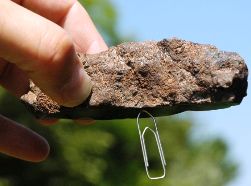 A thousand years before the first observations of electrical phenomena, humanity has already begun to accumulate knowledge of magnetism. And only four hundred years ago, when the formation of physics as a science was just beginning, researchers separated the magnetic properties of substances from their electrical properties, and only after that they began to study them independently. This laid the experimental and theoretical foundation, which became the foundation of e by the middle of the 19th centurytheory of electrical and magnetic phenomena.
A thousand years before the first observations of electrical phenomena, humanity has already begun to accumulate knowledge of magnetism. And only four hundred years ago, when the formation of physics as a science was just beginning, researchers separated the magnetic properties of substances from their electrical properties, and only after that they began to study them independently. This laid the experimental and theoretical foundation, which became the foundation of e by the middle of the 19th centurytheory of electrical and magnetic phenomena.
It seems that the unusual properties of magnetic iron ore were known as far back as the Bronze Age in Mesopotamia. And after the beginning of the development of iron metallurgy, people noticed that it attracts iron products. The ancient Greek philosopher and mathematician Thales from the city of Miletus (640−546 BC) also thought about the reasons for this attraction, he attributed this attraction to the animation of the mineral.
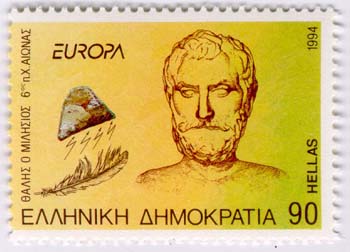
Greek thinkers imagined how invisible pairs envelop magnetite and iron, how these pairs attract substances to each other. Word "magnet" it could happen the name of the city of Magnesia-u-Sipila in Asia Minor, near which magnetite lay. One of the legends says that the shepherd Magnis somehow appeared with his sheep next to the rock, which pulled the iron tip of his staff and boots to him.
In the ancient Chinese treatise "Spring and Autumn Records of Master Liu" (240 BC), the property of magnetite to attract iron to itself is mentioned. After a hundred years, the Chinese noted that magnetite does not attract copper or ceramics. In the 7-8th centuries, they noticed that a magnetized iron needle, being freely suspended, turns towards the North Star.
So, by the second half of the 11th century, China began to manufacture marine compasses, which European sailors mastered only a hundred years after the Chinese. Then the Chinese have already discovered the ability of a magnetized needle to deviate in the direction east of the north, and thus discovered magnetic declination, ahead of European sailors in this, who came to exactly that conclusion only in the 15th century.

In Europe, the first to describe the properties of natural magnets was the philosopher from France, Pierre de Maricourt, who in 1269 served in the army of the Sicilian king Charles of Anjou. During the siege of one of the Italian cities, he sent a friend to Picardy a document that went down in the history of science under the name “Letter about a magnet”, where he talked about his experiments with magnetic iron ore.
Marikur noted that in any piece of magnetite there are two areas that attract iron especially strongly. He noticed in this resemblance to the poles of the celestial sphere, so he borrowed their names to denote the areas of maximum magnetic force. From there the tradition began to call the poles of magnets the south and north magnetic poles.
Marikur wrote that if you break any piece of magnetite into two parts, then each pole will have its own poles.

Marikur for the first time connected the effect of repulsion and attraction of magnetic poles with the interaction of opposite (south and north), or poles of the same name. Marikur is rightfully considered the pioneer of the European experimental scientific school, his notes on magnetism were reproduced in dozens of lists, and with the advent of printing, they were published in the form of a brochure. They were quoted by many naturalists until the 17th century.
With difficulty, Marikura was also well acquainted with the English naturalist, scientist and physician William Hilbert. In 1600, he published the work On Magnet, Magnetic Bodies, and the Big Magnet — the Earth.In this work, Hilbert cited all the information known at that time about the properties of natural magnetic materials and magnetized iron, and also described his own experiments with a magnetic ball, in which he reproduced a model of terrestrial magnetism.
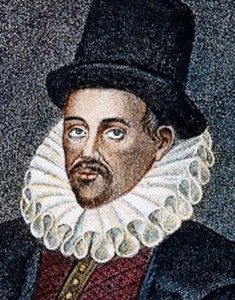
In particular, he experimentally established that at both poles of the "small earth" the compass needle rotates perpendicular to its surface, it is installed at the equator in parallel, and at mid-latitudes it is rotated to an intermediate position. In this way, Hilbert was able to simulate the magnetic inclination, which was known in Europe for more than 50 years (in 1544 it was described by George Hartmann, a mechanic from Nuremberg).
Hilbert also reproduced the geomagnetic declination, which he attributed not to the perfectly smooth surface of the ball, but on a planetary scale he explained this effect by attraction between the continents. He discovered how much hot iron loses its magnetic properties, and when cooled, restores them. Finally, Hilbert was the first to clearly distinguish between the attraction of a magnet and the attraction of amber rubbed with wool, which he called electric force. It was a truly innovative work, appreciated by both contemporaries and descendants. Hilbert discovered that the Earth would be rightly considered a "big magnet."
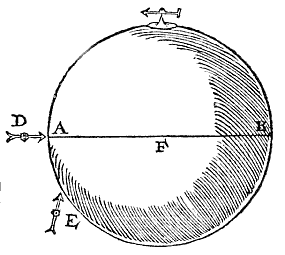
Until the very beginning of the 19th century, the science of magnetism advanced very little. In 1640, Benedetto Castelli, a student of Galileo, explained the attraction of magnetite with the many very small magnetic particles that make up it.
In 1778, Sebald Brugmans, a native of Holland, noticed how bismuth and antimony repelled the poles of a magnetic needle, which was the first example of a physical phenomenon that Faraday would later call diamagnetism.
Charles-Augustin Coulomb in 1785, through accurate measurements on a torsion balance, proved that the force of interaction of the magnetic poles with each other is inversely proportional to the square of the distance between the poles - as exact as the force of interaction of electric charges.
Since 1813, the Danish physicist Oersted has been diligently trying to experimentally establish a connection between electricity and magnetism. The researcher used compasses as indicators, but for a long time he could not reach the goal, because he expected that the magnetic force was parallel to the current, and placed the electric wire at right angles to the compass needle. The arrow did not react to the occurrence of current.
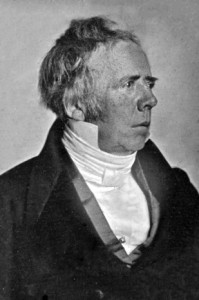
In the spring of 1820, during one of the lectures, Oersted pulled the wire parallel to the arrow, and it is not clear what led him to this idea. And so the arrow swung. Oersted for some reason stopped the experiments for several months, after which he returned to them and realized that "the magnetic effect of the electric current is directed along the circles surrounding this current."
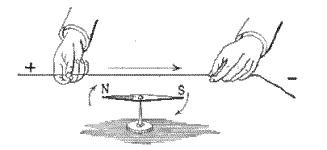
The conclusion was paradoxical, because before, rotating forces did not manifest themselves either in mechanics or elsewhere in physics. Oersted wrote an article where he outlined his findings, and was never engaged in electromagnetism anymore.
In the fall of the same year, the Frenchman Andre-Marie Ampère began experiments. First and foremost, having repeated and confirmed the results and conclusions of Oersted, in early October he discovered the attraction of conductors if the currents in them are directed in the same way, and repulsion if the currents are opposite.

Ampère also studied the interaction between non-parallel conductors with current, after which he described it with a formula called later Ampere's law. The scientist also showed that the coiled wires with current rotate under the influence of a magnetic field, as happens with the compass needle.
Finally, he put forward the hypothesis of molecular currents, according to which inside the magnetized materials there are continuous microscopic circular currents parallel to each other, which cause the magnetic action of the materials.
At the same time, Bio and Savard jointly derived a mathematical formula that allows calculating the intensity of the DC magnetic field.
And so, by the end of 1821, Michael Faraday, already working in London, made a device in which a current-carrying conductor rotated around a magnet, and another magnet rotated around another conductor.
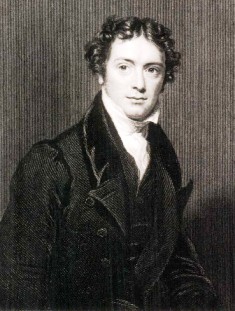
Faraday suggested that both the magnet and the wire are shrouded in concentric lines of force, which determine their mechanical effect.
Over time, Faraday became convinced of the physical reality of magnetic lines of force. By the end of the 1830s, the scientist was already clearly aware that the energy of both permanent magnets and current conductors was distributed in the space surrounding them, which was filled with magnetic lines of force. In August 1831 to the researcher managed to get magnetism to generate an electric current.
The device consisted of an iron ring with two opposite windings located on it. The first winding could be shorted to an electric battery, and the second was connected to a conductor placed above the arrow of the magnetic compass. When a direct current flowed through the wire of the first coil, the arrow did not change its position, but began to swing at the moments of its switching off and on.
Faraday concluded that at these moments in the wire of the second winding there were electrical impulses associated with the disappearance or appearance of magnetic field lines. He made the discovery that the cause of the emerging electromotive force is a change in the magnetic field.
In November 1857, Faraday wrote a letter to Scotland to Professor Maxwell with a request to give a mathematical form to the knowledge of electromagnetism. Maxwell fulfilled the request. The concept of electromagnetic field found a place in 1864 in his memoirs.
Maxwell introduced the term “field” to refer to the part of the space that surrounds and contains bodies that are in a magnetic or electric state, and he emphasized that this space itself can be empty and filled with absolutely any kind of matter, but the field will still have a place.

In 1873, Maxwell published The Treatise on Electricity and Magnetism, where he introduced a system of equations combining electromagnetic phenomena. He gave them the name of the general equations of the electromagnetic field, and to this day they are called Maxwell's equations. According to Maxwell's theory magnetism is a special kind of interaction between electric currents. This is the foundation upon which all theoretical and experimental works related to magnetism are built.
Read also on this topic:Inductors and magnetic fields
See also at bgv.electricianexp.com
:
